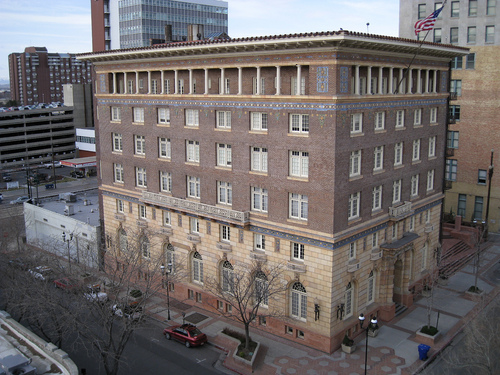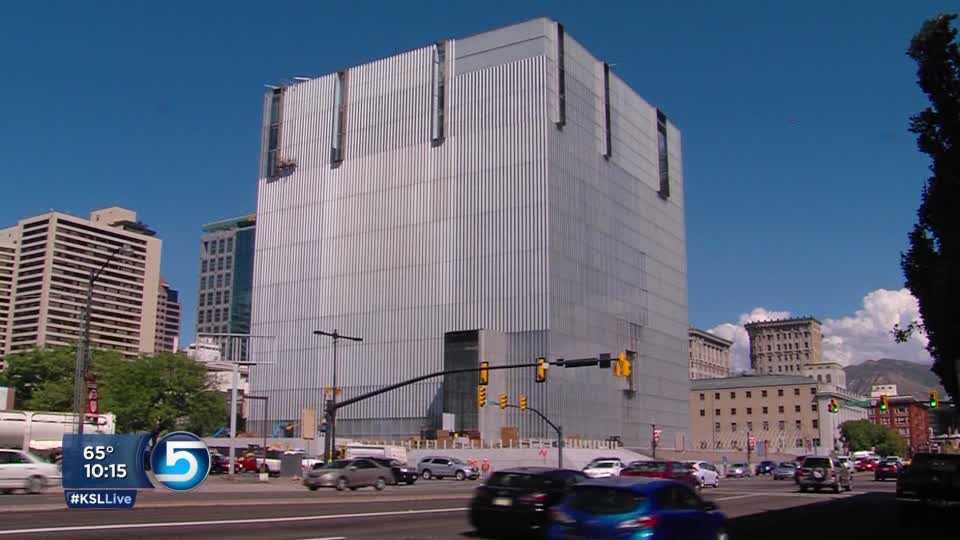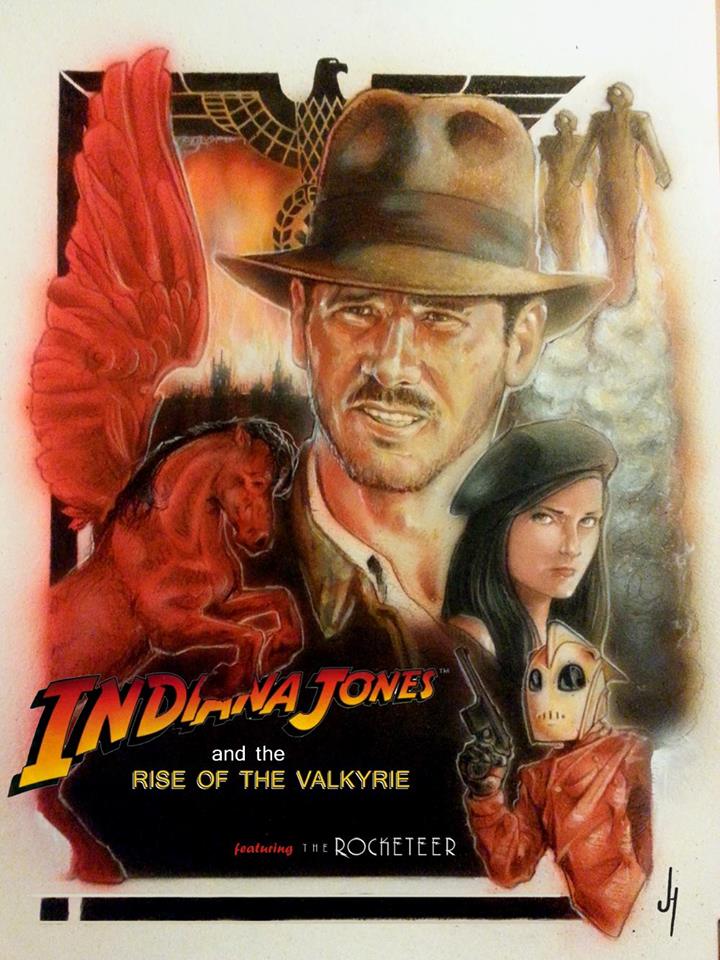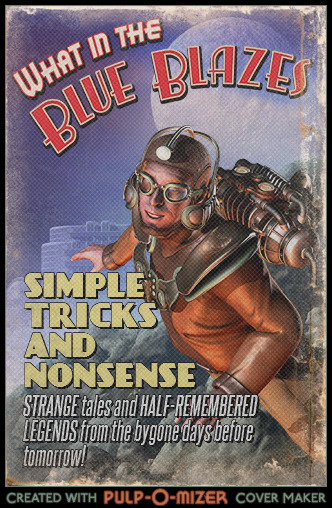I’ll be honest, the primary reason I accepted the offer of my present job seven years ago this month was simply to get some steady work after an extended period of what’s euphemistically called “underemployment.” (This is a polite term for a truly evil state of slow, grinding torture in which you’re not quite a down-and-out bum — you are working, at least from time to time — but you’ve got no long-term security, no disposable income to speak of, and a dwindling sense of self-worth. Another word for this is “contracting.” It’s not a good fit for me.)
However, a second major factor in my decision was the location of my new employer’s offices, a 100-year-old, six-story building called the Commercial Club, which is situated on a quiet side street of downtown Salt Lake known as Exchange Place:

Exchange Place was the vision of a 19th century mining magnate, Samuel Newhouse, who wanted to establish a non-Mormon business district as a counterbalance to the LDS Church-dominated city center four blocks to the north. Described as a “little Wall Street,” Exchange was intended to be a rectangular complex anchored on its four corners by four identical office towers, all financed out of Newhouse’s own pockets. Only two of these, the twin 11-story Boston and Newhouse buildings — Salt Lake’s very first steel-framed skyscrapers — were actually constructed. Newhouse ran out of money before the other two could even break ground. But a number of ancillary buildings were completed, including the nearby Newhouse Hotel (sadly demolished in the 1980s, to be replaced by a parking lot), the Salt Lake Stock Exchange, and my home away from home for the past seven years, the Commercial Club.
Originally built as a recreational facility for the businessmen Newhouse envisioned working on Exchange Place, the Commercial Club at one time featured an indoor swimming pool; a vast, two-story banquet room; card-playing and smoking rooms for the gentlemen; and separate facilities for the ladies, primly located away from the men on their own private floor. And because Newhouse wanted the very cutting-edge in turn-of-the-century technology, the building even featured one of Salt Lake’s first mechanical elevators, which is still there and still operating — if rather creakily — today.
Of course, I didn’t know any of that when I started working there. But the atmosphere around Exchange Place was immediately and immensely appealing to me. Salt Lake isn’t like other cities I’ve visited; there’s little sense of urban life or identity here. People live out in the ‘burbs, the streets are virtually deserted after 5 or 6 PM, and most everything around downtown is relatively new and, frankly, kind of bland in appearance. But this little pocket of Salt Lake, this one block that’s bisected by Samuel Newhouse’s rebellious gentile* development, feels like a real city environment to me. It’s not quite a New York neighborhood, obviously, but it’s a place with the patina of age and the self-confidence that comes from long establishment, from rising and falling and rising again. I love the idea of a block that’s spirited enough for both thousand-dollar-an-hour attorneys and dive bars, trendy tapas restaurants and the Heavy Metal Shop.
And the Commercial Club itself fit my TV-inspired notions of what an urban, white-collar professional workplace ought to look like, with sleek modern fixtures co-mingling alongside antique decorative flourishes, just like the office sets of, say, Ally McBeal.
Admittedly, working there has had a few downsides. Multiple retrofittings have resulted in a somewhat confusing interior layout, and there have been the plumbing, heating, and insect problems common to any old building. You encounter strange smells in certain areas. That beautiful old art-deco elevator has occasionally gotten stuck between floors, sometimes with people inside (never me, fortunately). And Exchange Place can get kind of sketchy later in the evening, if you find yourself working late. (I’ve seen hookers around there after dark; there were reports of a sexual predator in the area for a while; and there was that big drug bust a few years ago when we learned the roast-chicken restaurant on the corner was a front for heroin dealers.) But generally speaking, I’ve been very comfortable in that old pile. Ancient places with colorful histories suit me.
Alas, the powers-that-be decided a while back that it’s time for a change. So starting Monday morning, I’ll be going to work in a new location… ironically enough, right smack in the middle of that Mormon city center that Samuel Newhouse was so determined to break away from. Preparations for moving 200-some employees and all their attendant stuff have been underway for some time, but it really got real last week as big orange plastic crates were delivered to each and every cubicle so we could pack up our personal effects. Most of us only made token efforts at that for the first couple days, because we needed things at hand so we could continue working. And of course everything on our agendas got put on hold following a power outage on Monday that was caused by an underground explosion. (The blast was reportedly strong enough that it lifted a couple of manhole covers several feet into the air.) But yesterday was zero hour… the moving company arrived in the afternoon, and chaos descended as people finally started dumping their belongings into those boxes. As one of my coworkers remarked to me, he felt like we were in The Empire Strikes Back during the “frantic evacuation from Hoth” scenes. Personally, I felt more like it was graduation day, a mix of bittersweet and difficult-to-articulate emotions brought on by the sense that some kind of era was closing.
As it happens, this job I thought I’d take just long enough to get back on my feet turned out to be a pretty damn good place to be. It’s lasted longer than any other job I’ve ever had, which means I’ve been working in that building for longer than any other. That’s got to generate some level of attachment, doesn’t it? Also, the Commercial Club has so much more personality than any other place in which I’ve ever worked, with the exception of the two movie theaters that will always be my favorite workplaces. Every other job on my resume’ has been in nondescript business-park type settings, and they’ve all blurred in my memory into a generically white-walled, gray-carpeted, cube-farm porridge. But the Commercial Club… ah, I’m going to miss that building. I’m going to miss the funky plaster cow-skull decorations that framed the painted blue-sky ceiling in the lobby. I’ll miss the “lava lounge” that overlooks the old two-story banquet room, which used to be a dance club back in the Awesome ’80s. I’ll miss the marble staircases with the worn-down troughs in their centers that turn so treacherous in wet weather, and the stories about a murdered prostitute who still roams the hallways at night, whispering to those who are stuck working until the wee hours. Hell, I’m even going to miss the gallows humor about cockroach crossings. I’m man enough to admit I had a bit of a lump in my throat as I walked out of there for the last time, out into a hot, dry Utah summer evening.
Our new environs will have the perk of being up high, with lots of natural sunlight and stunning views of the city around us. But a little research reveals that they were only built in 1986, too recently to have the kind of character and identity we’re walking away from. It’s been an era, all right. At least for me.
* Loyal Readers who aren’t from Utah may be confused by my use of the word “gentile” above. FYI, that’s what Mormons have traditionally called non-Mormons. Even Jews. Yes, it’s kind of weird. That’s Utah for you.











